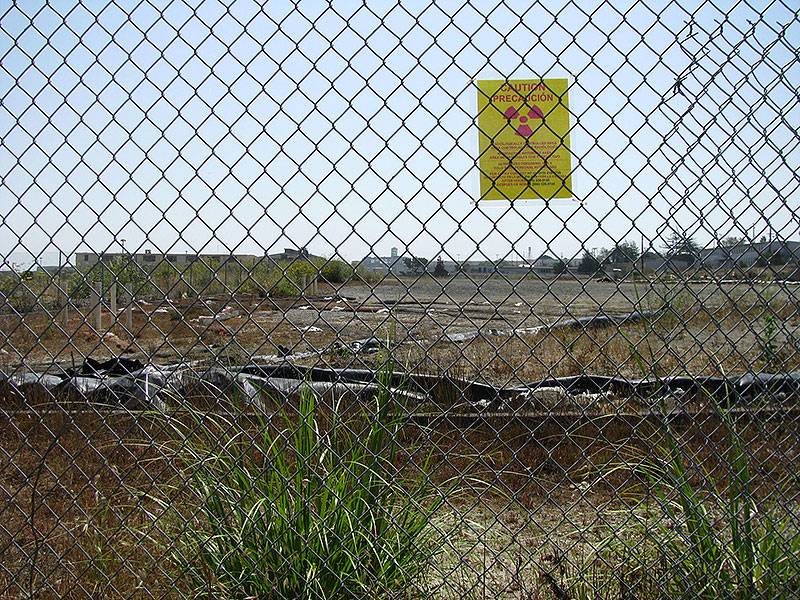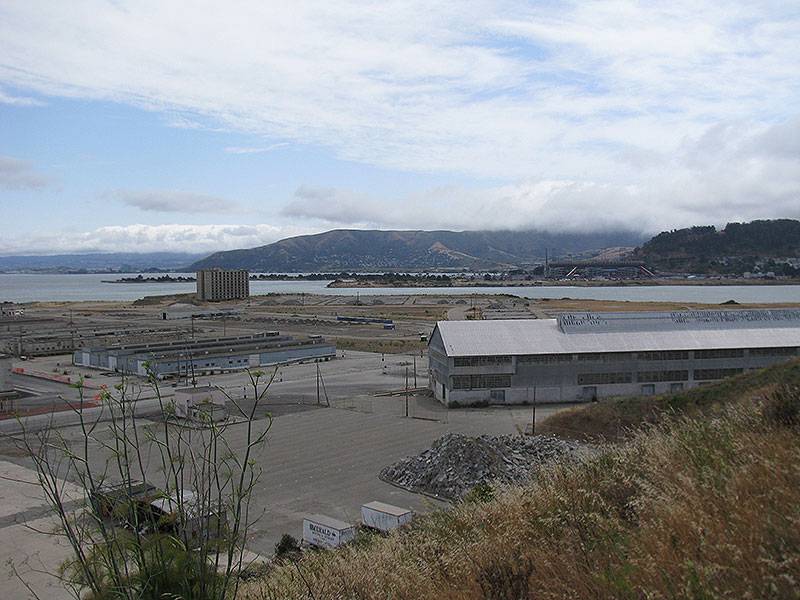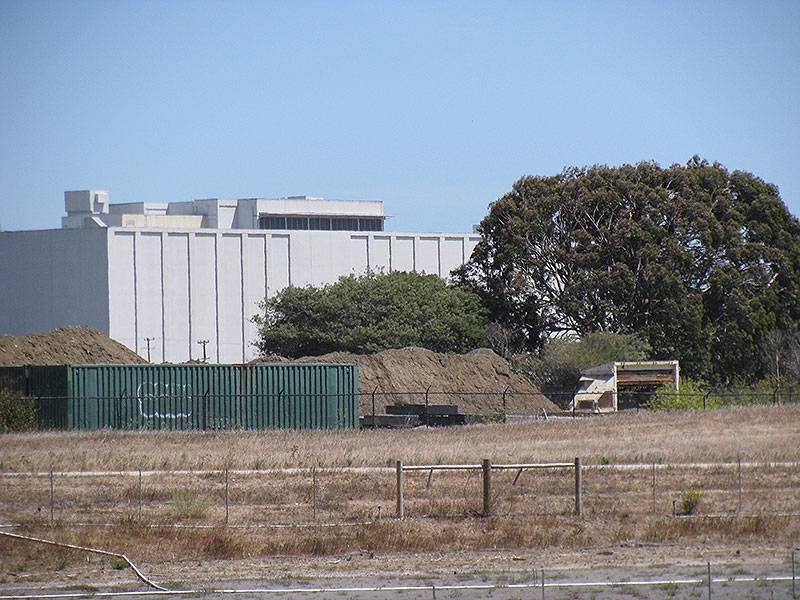Dirty Deeds Done Dirt Cheap at Hunters Point: Difference between revisions
(Created page with "'''<font face = Papyrus> <font color = maroon> <font size = 4>Historical Essay</font></font> </font>''' ''by Greg M. Schwartz'' ''Originally published on [https://sfbayview....") |
No edit summary |
||
| (2 intermediate revisions by the same user not shown) | |||
| Line 97: | Line 97: | ||
“I believe that there’s something to that,” Anton says regarding the theory that Tetra Tech was brought in to implement a coverup at Hunters Point. Anton’s involvement representing the whistleblowers puts him in an informed position. In a [https://www.nrc.gov/docs/ML1817/ML18178A097.pdf legal petition to the Nuclear Regulatory Commission (NRC)] to revoke Tetra Tech’s license with the NRC, whistleblower Elbert Bowers provided extensive detail on “a culture of deception” in Tetra Tech EC’s work at Hunters Point. Bowers went on to win a [https://spjnorcal.org/2019/01/28/spj-norcal-honors-2019-james-madison-freedom-of-information-award-winners/ James Madison Freedom of Information Award] in 2019 from the NorCal chapter of the Society of Professional Journalists. | “I believe that there’s something to that,” Anton says regarding the theory that Tetra Tech was brought in to implement a coverup at Hunters Point. Anton’s involvement representing the whistleblowers puts him in an informed position. In a [https://www.nrc.gov/docs/ML1817/ML18178A097.pdf legal petition to the Nuclear Regulatory Commission (NRC)] to revoke Tetra Tech’s license with the NRC, whistleblower Elbert Bowers provided extensive detail on “a culture of deception” in Tetra Tech EC’s work at Hunters Point. Bowers went on to win a [https://spjnorcal.org/2019/01/28/spj-norcal-honors-2019-james-madison-freedom-of-information-award-winners/ James Madison Freedom of Information Award] in 2019 from the NorCal chapter of the Society of Professional Journalists. | ||
[[Navy’s | [[Navy’s Own Complicity in the Historic Eco-Fraud Scandal at Hunters Point|continue reading]] | ||
[[category:Bayview/Hunter's Point]] [[category:shoreline]] [[category:Military]] [[category:1940s]] [[category:1950s]] [[category:2000s]] [[category:2010s]] [[category:Crime]] [[category:Ecology]] | [[category:Bayview/Hunter's Point]] [[category:shoreline]] [[category:Military]] [[category:1940s]] [[category:1950s]] [[category:2000s]] [[category:2010s]] [[category:Crime]] [[category:Ecology]] [[category:2020s]] | ||
Latest revision as of 22:14, 1 December 2020
Historical Essay
by Greg M. Schwartz
Originally published on Oct. 20, 2020, in the San Francisco Bayiew newspaper, republished here with permission.
Radioactivity warning sign on Earl Street perimeter of Hunters Point shipyard, 2009.
Photo: Chris Carlsson
This story is a follow-up to the four-part series, “2020 Hindsight Brings Corrupted Radiation Testing into Focus at the EPA.” The Navy paid a Tetra Tech subsidiary hundreds of millions of dollars for a botched cleanup in San Francisco that has been called “the biggest case of eco-fraud in U.S. history.” When Tetra Tech got busted for this fraudulent radiation testing and remediation at the former Hunters Point Naval Shipyard, the company claimed innocence by attempting to scapegoat the fraud on “rogue employees” allegedly acting on their own.
But as the SF Bay View’s series revealed, this wasn’t the first time that Tetra Tech had been in the middle of suspicious radiation testing controversies – another subsidiary of theirs had previously been accused of similar shenanigans at the Industrial Excess Landfill in Ohio. Curiously, the IEL was deemed a “case in point” by the EPA in the early ‘90s for how to deal with radiation issues at Superfund sites nationwide. “We now know what they [the EPA] did to us and how they did it,” activist Chris Borello said earlier this year of a coverup that spanned decades at the IEL in Uniontown, Ohio.
The Department of Justice has joined Tetra Tech whistleblowers in multiple false claims lawsuits against the company, but this hasn’t stopped state and federal agencies from continuing to hire Tetra Tech for other lucrative contracts in California and around the country. The wisdom of hiring any Tetra Tech entity for more projects while the company is being sued for massive eco-fraud by the DOJ must now come into question. Meanwhile, the struggle for environmental justice continues for the citizens of Hunters Point …
The former Hunters Point Naval Shipyard on the edge of the San Francisco Bay has been a source of contentious controversy over the past decade. The EPA Superfund site became highly contaminated during the decades in which the shipyard cleaned and refurbished naval vessels that had been exposed to atomic bomb testing in the Pacific. The site also served as home to the Naval Radiological Defense Laboratory.
Eager to develop the area for lucrative real estate projects, the City of San Francisco has long sought to see Hunters Point decontaminated and sold to private developers. After years of planning, the Navy hired Tetra Tech EC to survey the site, identify contaminants, and remove them so that the land could be declared remediated and turned over to the city.
But employees of Tetra Tech came forward in 2012 to allege fraudulent practices that put public health at risk. A criminal probe led to the conviction of two supervisors, but Tetra Tech dismissed the whistleblowers as an isolated case of two rogue employees. The company claims that it performed all work to standards set by the Navy and EPA.
The prior involvement of another Tetra Tech subsidiary in radiation testing controversies that included some of the same accusations at the Industrial Excess Landfill (IEL) Superfund site in Ohio begs the question of whether the company’s claims of innocence are believable, as well as whether the Navy and EPA take their responsibilities to the public seriously.
The view south across Parcel E, the most toxic zone of the abandoned Hunters Point shipyard.
Photo: Chris Carlsson, 2013
Did the powers that be aim for a cleanup or a coverup at Hunters Point?
Employees reported that the culture of Tetra Tech’s cleanup methodology began to change in 2011, when the firm’s contract was restructured from a “time and material” basis to a “firm fixed-price model.” This change inherently provided motivation for the company to finish the cleanup as quickly as possible.
The whistleblower complaints focused on how tests that revealed soil samples with radioactivity were altered by supervisors to show that the samples were clean. An internal report leaked in 2014 revealed that Tetra Tech had acknowledged submitting false data to the Navy and EPA. The two supervisors involved were the ones that Tetra Tech has attempted to scapegoat as “rogue employees.”
But the scandal at Hunters Point continued to deepen, with the EPA reaching out to the Navy at the end of 2017 to report wider problems. EPA Superfund manager John Chestnutt’s letter was eerily similar to the Project on Government Oversight’s 1998 press release that questioned why the EPA was re-hiring Tetra Tech at the IEL site in Ohio after the firm had made so many mistakes there:
“The data revealed not only potential purposeful falsification and fraud in terms of sample and/or data manipulation, they also reveal the potential failure to conduct adequate scans, a lack of proper chain of custody for ensuring samples were not tampered with, extensive data quality issues (including off-site laboratory data) and general mis-management of the entire characterization and cleanup project,” wrote EPA’s Chesnutt in his December 2017 letter to the Navy.
The news grew still worse for Hunters Point citizens in April 2018 when the EPA reported that the Navy had severely underestimated the scope of the scandal, with a new analysis indicating that at least 90 percent of the soil sample tests were unreliable. But by then, contaminated soil that had been falsely certified as clean by Tetra Tech had already been hauled away and dumped in landfills that weren’t licensed to receive radiological waste.
The 2018 revelations led Rep. Nancy Pelosi, then House Minority Leader, to author an angry letter to the Navy and EPA Inspector Generals in which she called for a new investigation into “whether [they] provided the appropriate levels of oversight during the original clean-up and testing process, how they handled whistleblower accusations, whether any further or false reporting is present in other Tetra Tech EC contracts, and whether they are following best practices” in moving forward.
By supporting the DOJ in suing its own contractor, the Navy has passed the buck on their own negligence in an ironic act of cognitive dissonance for the ages.
Jeff Ruch of Public Employees for Environmental Responsibility (PEER) says it’s hard to predict what might come of the IG probes into Hunters Point, especially if they defer to the civil suit filed against Tetra Tech rather than pursuing a criminal investigation.
“Accountability is an elusive thing and the IGs don’t really answer to anybody,” PEER’s former executive director says (now the director of Pacific PEER, the organization’s West Coast office). “We’ve seen military IGs do complete whitewashes under command pressure. We’ve also been pleasantly surprised at times … What’s the scope of it? IGs tend to have a bias toward the $5 million question and try to avoid the $500 billion question because they prefer to approach it as an accountant would, rather than look for deeper policy dysfunction or decision-making rot.”
Ruch says it will be difficult even for Speaker Pelosi to monitor what’s going on with the IG investigations, which leaves the public in the dark as well.
“If the IGs have accepted her request – and we believe they have – she’ll find out at the end, so they’re not going to brief her as they go through. And one of the problems with the IG investigations is that they’re black boxes, so you don’t know who’s investigating what, how it’s been scoped; there’s no timeline.”
The question of Tetra Tech’s scapegoating of ‘rogue employees’
David Anton, attorney for Tetra Tech whistleblowers in multiple lawsuits against the firm, has been digging into the Hunters Point fraud for the better part of the past decade. He says whistleblower reports reveal a blatant contradiction in Tetra Tech’s account of the alleged “rogue employees” because these workers in question were “in the field doing grunt work.” But the EPA later found fraudulent data, compiled at one building, pasted into another and then manipulated.
“There’s no way the guys in the field are in the office doing this data manipulation; it’s beyond them,” Anton says of the operation run by Tetra Tech EC.
He described how the Radiation Control Technicians (RCTs) in the field could observe and see the results in the control box on the scanning machines, then download the data from their machine into a computer and change numbers for the scan they’d just performed. But he says these RCTs had no access or ability to obtain data from other machines performing other surveys.
“Rather, data from each of the machines was sent to the main office where for the first time the data was collected from different machines for different survey units. In the office, very few individuals had access to the main data computer that obtained the information from multiple survey units,” Anton explains. “The field RCTs and their immediate field supervisors, like Hubbard and Rolfe [the two former supervisors who pled guilty to falsifying soil samples], were regularly in the field, and were not individuals that had job responsibilities that included access to the main office computer that collected the field data.”
Anton additionally cited the government’s First Amended Complaint for demand of a jury trial vs. Tetra Tech EC (filed in July 2019), noting that it describes and attaches information about the building block copy fraud that he feels could not have been done by lower level field employees.
“Following the discovery of the falsification of soil samples, the Navy retained independent consultants to review the data from radiological surveys performed by Tetra Tech in buildings at Hunters Point. The Navy’s consultants found that strings of data from readings from one instrument and surface were repeated for readings from other instruments and surfaces within a building,” reads the complaint on page 21.
Former radiological lab at Hunters Point, where materials from the H-bomb tests in the South Pacific were brought for further testing.
Photo: Chris Carlsson, 2011
“Duplicated strings of data were discovered in the results of surveys conducted in 15 of 28 buildings. In some instances, the exact time, to the second, that the reading was taken was also duplicated. In other cases, duplicated data strings were altered slightly in an effort to conceal manipulation of the data. The duplicated strings of data were found in building scans conducted in 2008-2010 and again in 2014. Exhibits 4 and 5, which are Alpha/Beta Direct Measurement Reports submitted by Tetra Tech to the Navy in connection with scans supposedly performed at Building 113, contain representative examples of Tetra Tech’s data duplication.”
Anton has been on the frontlines of the fight for environmental justice at Hunters Point by representing the whistleblowers in the legal battle to see Tetra Tech held accountable.
“Corporations that defraud the government and put the lives and health of the public at risk now and for generations to come should not only pay the government for that fraud, but should have further consequences. One should ask whether a company that puts profits over lives should be permitted to be honored with further government work,” Anton suggested to Law360 after a September 2019 hearing.
In a surreal plot twist of pot calling kettle black, Tetra Tech EC filed their own lawsuit in July 2020 against five competitors who had been brought in by the Navy to review allegations by whistleblowers regarding the scandal at Hunters Point. Tetra Tech claims these competitors used criteria based on “junk science” in their review, in an alleged effort to further damage the company’s already badly tainted reputation. The complaint further alleged that these competitors sought to damage Tetra Tech’s reputation so they could get hired to re-do the work themselves.
“I find it interesting that Tetra Tech is suing those companies … but they haven’t sued the Navy and the EPA, who said it’s even worse than these companies did,” Anton notes regarding Tetra Tech EC’s lawsuit against CH2M (now owned by Jacobs Engineering), Battelle, Cabrera Services, Permafix Environmental Services and SC&A.
Anton is now theoretically working alongside the Department of Justice, which joined his three whistleblower lawsuits against Tetra Tech EC in October of 2018. Anton says the DOJ should ostensibly have taken the functional lead on the prosecution, but that they’ve so far failed to offer any significant disclosure as to their activities on the three cases. But he’s learned that a team of DOJ attorneys has been interviewing people, although they have not yet had to inform him or the court of their activities.
The next hearing is set for Oct. 22, when Tetra Tech will once again venture into mind boggling cognitive dissonance territory with a motion to dismiss the whistleblower lawsuits based around the argument that the Navy allegedly knew about the firm’s fraud but still gave them more contracts to continue.
“The defendants are taking the position that the government must have known – based on a number of different things – that they were being screwed by Tetra Tech, so therefore the whistleblower lawsuits should be thrown out,” Anton explained of the bizarre motion to dismiss under the federal False Claims Act. He reflected further upon the Navy’s motives, suggesting a disturbing complicity in the coverup.
“I think they [the Navy] were concerned that across the country, people would start looking at their projects and conclude that maybe what happened at Hunters Point was more the norm than the exception,” Anton says, noting that U.S. attorneys working for the Navy in 2016 weren’t interested in interviewing certain key witnesses.
Placing the Navy’s behavior in the context of how Tetra Tech’s fraud at Hunters Point included troubling similarities to their flawed work in the controversial cleanup at the Industrial Excess Landfill in Ohio, observers could start to wonder whether Tetra Tech was hired on at Hunters Point precisely because of an insider reputation for delivering a cheaper quicker coverup in place of a more costly and time-consuming cleanup.
“I believe that there’s something to that,” Anton says regarding the theory that Tetra Tech was brought in to implement a coverup at Hunters Point. Anton’s involvement representing the whistleblowers puts him in an informed position. In a legal petition to the Nuclear Regulatory Commission (NRC) to revoke Tetra Tech’s license with the NRC, whistleblower Elbert Bowers provided extensive detail on “a culture of deception” in Tetra Tech EC’s work at Hunters Point. Bowers went on to win a James Madison Freedom of Information Award in 2019 from the NorCal chapter of the Society of Professional Journalists.



